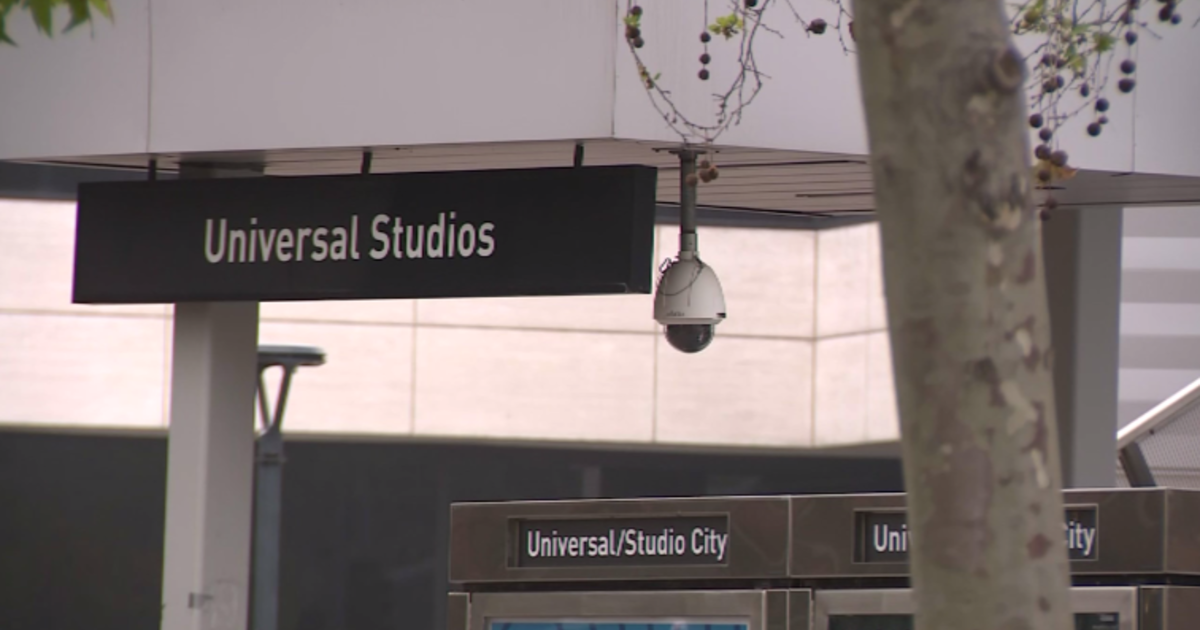Bug Hunters Fan Across SoCal Hoping To Stop Spread Of Devastating Citrus Tree Disease
HACIENDA HEIGHTS (AP) — The ubiquitous backyard citrus tree, symbolic of California's agricultural abundance, is front and center in the battle now under way to save the state's nearly $2 billion citrus industry.
State bug detectives fanned across this suburban Los Angeles neighborhood Monday, vacuuming backyard trees with bug catchers, setting traps and taking tissue samples from citrus in a frantic effort to stop the spread of a deadly disease detected there last week.
"You can treat commercial groves with pesticides, but you can't do that in downtown LA," said Larry Hawkins of the U.S. Department of Agriculture, underscoring the difficulty in treating an agriculture disease in an urban landscape.
The confirmed detection of the bacterial disease huanglongbing — more commonly called citrus greening — in a backyard lemon hybrid was the moment industry officials had feared since 2008. That's when the only bug that transmits it was first discovered in the state that produces 80 percent of the nation's fresh orange supply.
Since then state officials have been testing other trees within a half-mile radius to determine if the disease has spread beyond the single tree.
"It's a huge job," said Kurt Floren, the Los Angeles County Agricultural Commissioner. "They are literally walking every street and visually searching for any citrus trees or other host plants."
Huanglongbing has cost the Florida citrus industry 6,600 jobs and billions in lost revenue since it appeared there in 2005, eight years after that state's first detection of the Asian citrus psyllid that transmits it.
When the bug crossed into California from Mexico, officials began monitoring commercial groves and backyard gardens across Southern California and the San Joaquin Valley in an effort to catch and isolate the disease the moment it appeared.
The trapping program paid off when the USDA confirmed on Friday what state agriculture officials had feared: Both a psyllid and the 8-foot, 8-year-old grafted lemon-pummelo tree where it was found March 22 in the Hacienda Heights suburb of Los Angeles County were infected with huanglongbing.
Researchers are trying to determine where the tree came from, whether it already was infected, whether an infected graft was placed on it, or if the bug transmitted the disease to it. An infected psyllid spreads the disease by feeding on leaf shoots, and a healthy bug can become a carrier by feeding on a diseased tree.
One of the biggest problems agriculture officials face is homeowners who smuggle in plant material from other countries, not realizing the potential threat to California's $38 billion agriculture industry.
"We will try to figure out where this tree came from in case it came from out of the country and determine the pathway for this disease," said Helene Wright of the USDA.
Fighting the spread of huanglongbing and suppressing the psyllids could shape up to be California agriculture's biggest challenge in decades. Gone are the days when aerial spraying was used to combat the Mediterranean fruit fly. Other recent efforts to combat invasive pests, such as the European grapevine moth, usually do not involve backyard growers.
California growers have watched as the disease slowly has marched across the country. From Florida it moved into Georgia and South Carolina, and eventually to Texas. The states of Arizona, Mississippi and Alabama have detected the pest but not the disease
Officials from the California Department of Food and Agriculture immediately got permission from the homeowner to spray the tree with the pesticide TEMPO, a pyrethroid-type insecticide that lasts up to 30 days. It will be removed later this week, but CDFA officials will not say where the tree is located while the investigation is ongoing.
Industry officials in charge of maintaining the health of the state's 275,000 acres of commercial citrus groves are watching with trepidation.
"This is the most significant plant disease invasion into California in modern history," said Ted Batkin of the Citrus Research Board.
Walking door-to-door in a half-mile radius of Ground Zero, ag officials have been hanging traps and scouting for potentially diseased trees. By Friday they had surveyed 435 properties, found 178 host plants and took samples from 57 trees that potentially exhibited the symptoms: yellowing of new shoots, misshapen fruit and leaf blotching. It can take years for an infected tree to show symptoms, and all eventually die.
In one 15-minute span on Monday CDFA trappers using vacuum-like devices collected 25 Asian citrus psyllids from a single backyard tree in the target area. They will send the bugs to a lab to determine whether they are carrying the killer bacteria.
"Most of the people are cooperating with us, but some say 'no,'" said Hector Verduczo, a trapper with the CDFA.
The state is asking the Office of Administrative Law for emergency authority ordering mandatory treatment all of the trees in the half-mile zone in an attempt to kill the psyllids and prevent the spread of the disease. County agriculture officials are working to educate homeowners by mailing out information prior to a community-wide meeting April 9.
"There are hundreds of thousands — if not millions — of these bugs out there. It's critical for us to move quickly and locate the diseased trees," said Floren. "The people of Los Angeles County need to realize how important this is. It's so common to have citrus in residential backyards, and nobody wants to see widespread losses there."
(©Copyright 2012 The Associated Press. All Rights Reserved. This material may not be published, broadcast, rewritten or redistributed.)



